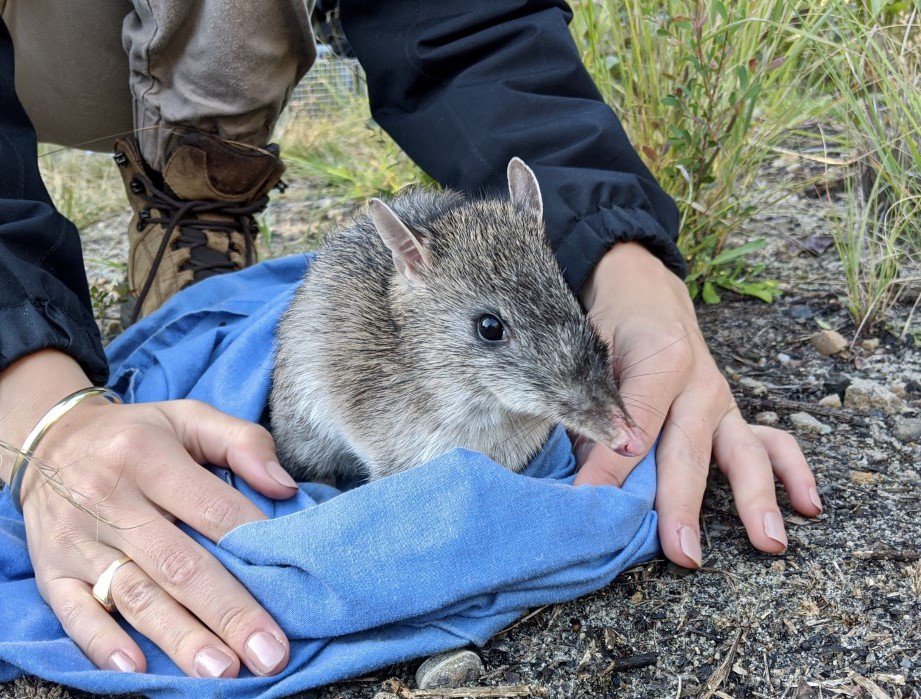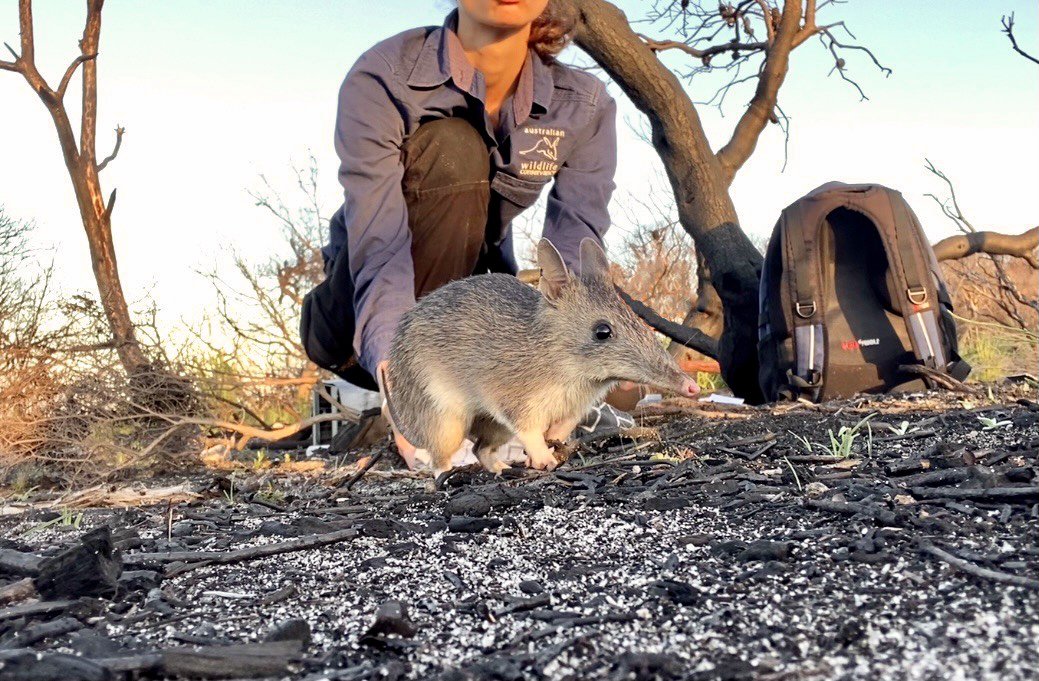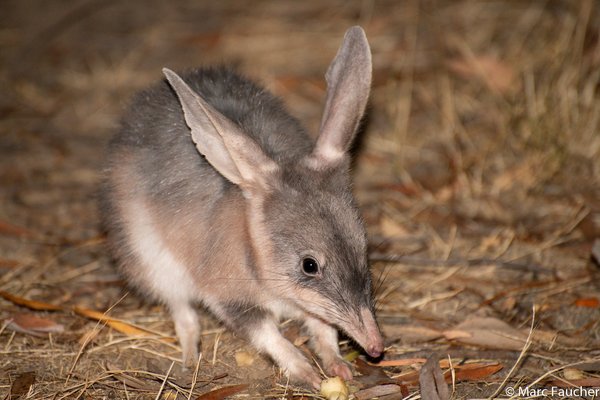Living on the edge! Molecular insight into Sydney’s endangered bandicoot population
An endangered population of long-nosed bandicoots are inhabiting an iconic Sydney headland – and molecular insights show that they are surviving on the edge.
The impact of European settlement over the last 200 years has resulted in significant declines in Australian biodiversity, particularly in mammals. The fragmentation of once large, continuous populations due to habitat disturbance and development, has resulted in smaller, disconnected populations which are vulnerable to loss of gene flow, reduced diversity, and increased differentiation via genetic drift. The extinction risk of isolated, remnant populations is also amplified as these populations are more susceptible to increased inbreeding, genetic erosion and impacts from environmental factors. These impacts are particularly evident along the highly urbanised east coast of Australia, especially around the greater Sydney region.

A Long-nosed bandicoot being released during a NPWS biannual monitoring survey on North Head.
Image: Kyla Johnstone, AWC© Kyla Johnstone, AWC
Small, ground dwelling marsupials in particular have been impacted by these changes, such as the long-nosed bandicoot (Perameles nasuta). As a habitat generalist, long-nosed bandicoots have a broad distribution along the east coast of Australia, from far north Queensland to southwest Victoria. They inhabit open forests, shrub land, coastal heath and vegetated urban land. Bandicoot life history traits, such as high reproductive output and omnivorous diet, have meant that long-nosed bandicoots have been able to persist in fragmented and disturbed environments where other species have not.
Long-nosed bandicoots were once abundant throughout greater Sydney, however urbanisation has since pushed individuals and populations to the edge. Such is the case with the remnant population on North Head, the headland at the entrance to Sydney Harbour, which is listed as an ‘Endangered population’ by the New South Wales Threatened Species Scientific Committee. The listing is due to the population’s small size, apparent isolation on the headland and other threats including fox predation and vehicle strikes. Currently the endangered population is managed by NSW National Parks and Wildlife Service, Sydney Harbour Federation Trust, and Australian Wildlife Conservancy. Annual surveys have been carried out over the last two decades to monitor this population, with the estimated population size remaining relatively consistent (n = 170) over the 260-hectare site.

North Head is a patch of isolated habitat that is almost completely surrounded by water – it has bandicoots literally living on the ‘edge’.
Image: Angela Rana, AWC© Angela Rana, AWC
To further inform the management and conservation of the population, we undertook a genetic study to investigate two questions. Firstly, to assess if there is any gene flow between individuals in the ‘Endangered’ North Head population and those remaining populations of bandicoots in the nearby northern Sydney suburbs; and secondly, to measure genetic diversity of the North Head population over time. To do this, DNA from tissue samples collected from long-nosed bandicoots from 2001-2019 were extracted and sequenced, and single nucleotide polymorphisms (SNPs) markers were analysed from 167 individuals from both North Head and greater northern Sydney suburbs.
Our results showed that long-nosed bandicoots from North Head were genetically differentiated and clustered separately to those from other areas throughout greater northern Sydney. This suggests there is limited gene flow on to or off the headland, supporting its original listing based on isolation. Importantly however, our analyses suggested the current boundary of the ‘Endangered’ population was not a biological boundary and should be further investigated and expanded if necessary.
Genetic diversity analyses of the North Head population from 2002-2019, found relatively constant levels of genetic diversity and only minor levels of inbreeding, suggesting this population is not yet suffering serious detrimental genetic effects due to its isolation. Results also found a small number of individuals sampled at North Head showed greater similarity to other northern Sydney populations, suggesting the occasional movement of bandicoots onto North Head. As these types of movements are beyond the dispersal capabilities of this species and there are significant geographical barriers present, this may be a result of human intervention. This ad hoc gene flow has likely aided the North Head population in maintaining genetic diversity however, translocation of animals should only be carried out by authorised agencies in order to ensure the best welfare and scientific outcomes for the individuals and populations involved, with impacts being tracked and monitored over time.

A male long-nosed bandicoot released after being processed.
Image: Holly Nelson, AWC© Holly Nelson, AWC
Our genetic study is the first genetic assessment of this population and has increased our understanding of the North Head long-nosed bandicoots, enabling for greater insight into effective management strategies to conserve this ‘Endangered’ population. This is particularly important following a recent fire that ravaged much of the population’s habitat. This work has provided valuable baseline genetic data that can be used to monitor and manage this population as it recovers after the fire.
Holly Nelson, Honours Student, The University of Sydney & Australian Museum Research Institute
Dr Greta Frankham, Research Assistant, Australian Centre for Wildlife Genomics, Australian Museum Research Institute
Dr Mark Eldridge, Principal Research Scientist, Terrestrial Vertebrates , Australian Museum Research Institute
Dr Mark de Bruyn, Senior Lecturer in Evolutionary Biology, School of Life and Environmental Sciences, Faculty of Science, The University of Sydney
Dr Viyanna Leo, Wildlife Ecologist, Australian Wildlife Conservancy
Dr Jennifer Anson, Senior Ecologist, Australian Wildlife Conservancy
More information:
- Nelson, H.V., Frankham, G.J., Leo, V., Anson, J., Eldridge, M.D.B. and de Bruyn, M. 2021. Conservation genomics of the ‘Endangered’ long-nosed bandicoot (Perameles nasuta) population at North Head, Sydney, Australia. Conservation Genetics. https://doi.org/10.1007/s10592-021-01356-z.









